There has been considerable discussion over whether or not UV radiation is indeed necessary for plant growth. Certain cultivators even question whether UV light should have any role at all in the process of growing plants at all. The simple fact of the matter is that if you are cultivating plants inside, you need to provide them with a supplement of some kind in order for them to thrive. We’ll walk you through all you need to know about this wavelength, along with the most effective methods to incorporate it into your indoor grow space.
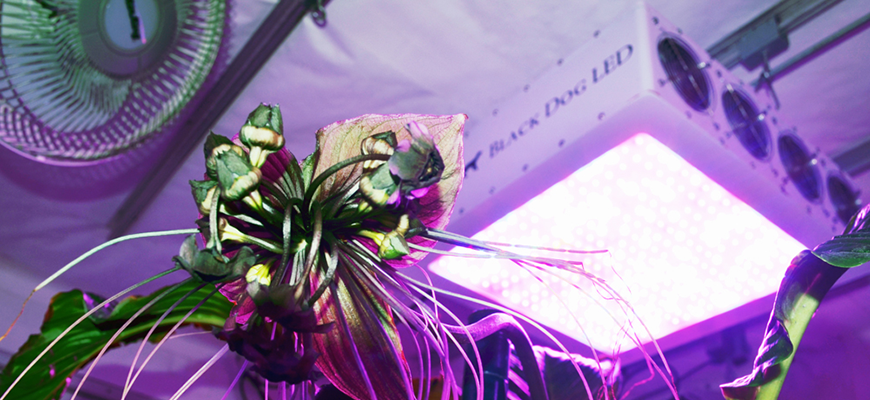
What exactly is this UV light?
In its most common abbreviated form, ultraviolet light is referred to as UV light. Strictly speaking, ultraviolet light is a kind of electromagnetic radiation that is produced by the sun. When you go outside, you put yourself in danger of being exposed to ultraviolet (UV) light. It is composed of three distinct groups of wavelengths, which are referred to as UVA, UVB, and UVC, respectively. It promotes the growth of plants in a number of different ways, and it also has the potential to enhance the overall potency and quality of your flowers. However, only certain wavelengths of ultraviolet light provide any actual advantages to plant life.
When Should You Introduce UV Light to Your Plants?
There has been considerable discussion concerning the circumstances under which the use of UV radiation is genuinely effective. It has been recommended by some cultivators that you avoid using it during the vegetative stage since it will not add very much and will just result in a waste of money. The phrase „don’t invest in the vegetables; invest in the flowers“ is one that we hear rather often. But how can you expect your plant to provide a bountiful crop if you don’t put any effort into the cultivation of the vegetables? Because of this, we strongly advise using UV lights throughout the whole cycle, from seeding to harvesting, if at all possible.
Your plants will have thicker cuticles, a higher metabolism, and generally be stronger and healthier if you provide UV light to them throughout the propagation and early vegetative stages of their growth. There is little doubt that the sum of these factors results in a plant that is capable of producing larger and more powerful buds. Our research has shown that exposing an organism to moderate levels of ultraviolet light continuously throughout its lifetime is preferable to exposing it to high levels of UV light at certain stages in its development. This method is not only less risky but also more efficient.
As you can see, there are quite a few advantages to employing ultraviolet (UV) light while cultivating your plants. Nevertheless, is there even a remote possibility that UV light may be hazardous to plants? In the event that you make use of the appropriate UV light, you won’t have to be concerned about your plants being harmed. If you tried to use anything like a tanning light, for instance, you would end up in danger and with bad results. It is imperative that you make sure the light you choose is one that is created especially for the purpose of growing plants.
Related Article: What Is a Toothbrush Sanitizer?
How Much UV Light Is Necessary for Plants?
Understand that your plants‘ needs for ultraviolet light are really small before you go out and get an industrial UV lamp to provide it for them. In this particular scenario, less is more. With just two to three watts of ultraviolet (UV) light per square foot of growing area, you may get very successful outcomes. This indicates that for a tent that is 4 feet by 4 feet, for instance, you would be just fine with anywhere between 32 and 48 watts of UV illumination to get the desired results.
Growers have a responsibility to take precautions when working with UV light. Even if the UV radiation may not be detrimental to your plants in and of itself, it still could be to you. Because you are more directly exposed to UV rays from artificial sources, they may do greater harm to your skin than those from natural sources like the sun. When you are near UV rays, you must protect your eyes by wearing protective eyewear. If you are going to be working in close proximity to your lights, we also suggest that you wear sleeves.
Should you be using UV lights in the grow room that you have?
Obviously, you need to do that! There’s no doubt that UV light has a number of benefits that could help your indoor plants grow, even if using UV rays in the grow room in the wrong way could have negative effects. Adding a UV wavelength to your grow lamp can improve the quality of your crops in a way that nutrients never could. This is true whether you are using ultraviolet light for a big business or something smaller and more personal.
However, before you begin making use of them, there are a few things that you will need to take into consideration: Your plants have very particular light requirements. Not all plants make resin, and not all the valuable properties of resin can be predicted in advance. If you are going to employ ultraviolet rays (UVs), you need to be sure that the plants you are growing can truly benefit from them. In order for your plants to manufacture resin in a risk-free manner, you will also need to determine the height, wattage, and location of any UV lights that are in the vicinity of your plants.
Height and Space Restrictions: You should hang your ultraviolet lights at the same height as the rest of your lights, if possible. It is possible to kill your plants by exposing them to ultraviolet light for an extended period of time, so make sure you have enough space to place the lamps at an appropriate distance. Prolonged exposure to ultraviolet radiation without any kind of protection may be harmful to both people and plants in the long run. Because your plants may be damaged by these very powerful wavelengths, you will want to restrict the amount of time that they are exposed to ultraviolet light as well as the strength of that light. Wearing sunglasses and long sleeves might also be beneficial if you are going to be exposed to UV radiation for an extended period of time.
One thing you should think about when deciding whether or not to use UV light in your grow room is how much it will cost. LED grow lights have a more difficult time integrating UVs into their systems, which is one of the reasons why LEDs with a UV wavelength cost a little bit more than other types of lights. UV-T5s are the more cost-effective option, and they are an excellent choice if you are currently making use of HIDs or T5 grow lights.
Which Type of UV Light Is Ideal for Plants, And Why?
Make sure that you provide your plants with a UV grow light that is of a good grade if you want the greatest outcomes. There are several full-spectrum LEDs that will produce just the proper quantity of each form of ultraviolet light. In addition to this, it will simulate natural sunshine, giving the plants the impression that they are being grown in the open air. There are also some double-ended (DE) bulbs and ceramic (CMH) grow lights that generate UV light. CMH stands for ceramic and DE for ceramic. At Hydro builder, we have a comprehensive inventory of UV Spectrum LED Grow Lights for you to choose from. The following items are some of our top picks:
Grow lights with LEDs from Black Dog. Black Dog LED is an industry leader when it comes to grow lighting. They have an incredibly well-researched design and have produced the greatest spectrum ever seen when it comes to growing plants. The entire Phytomers line of LEDs uses the Phyto-Genesis Spectrum, which includes the perfect amount of UVA light to grow plants. They experimented with adding UVB to the spectrum and noticed superior results with just UVA. So, they omit UVB altogether. These are widely known as the best LED grow lights money can buy, but they aren’t in every grower’s price range.
Related Article: Are UV sanitizers effective? What You Should Know Before Making One
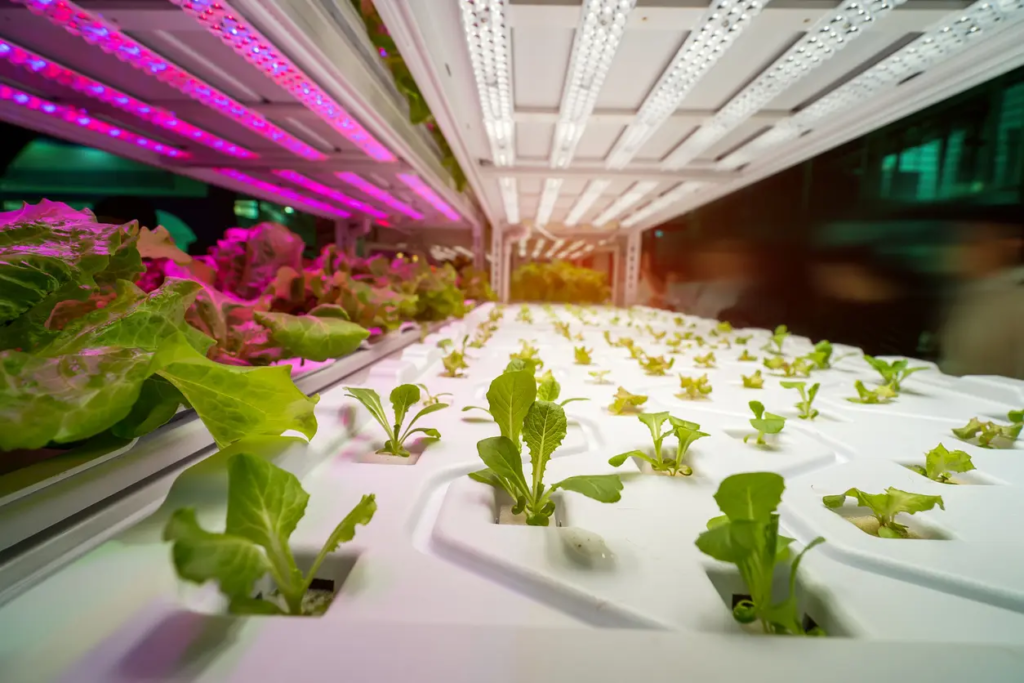
LED Grow Lights by California Lightworks
Another reputable manufacturer in this industry is California Lightworks. They have a great selection of LEDs with an added UV spectrum to enhance growth, along with all the other benefits mentioned above. Here are some great options:
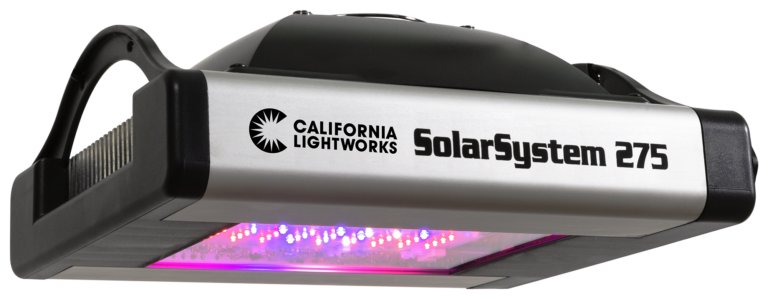
- Solar System SS550 550-Watt Full Spectrum UVB LED
- Full Spectrum 400 Watt COB LED with UVB Solar Tremé 500
- Full Spectrum 800 Watt COB LED with UVB Solar Tremé 1000
- Solar System SS1100 800-Watt UVB Full Spectrum LED
LEC Boss 315 Watt Grow Light from Sun System
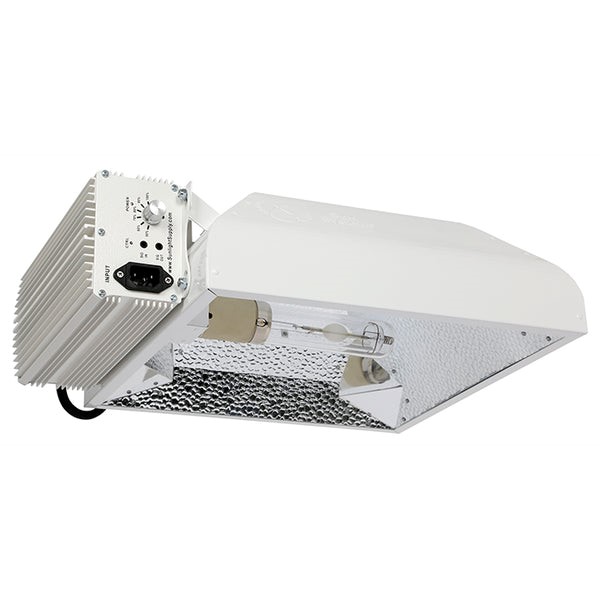
The Sun System LEC Boss 315 Watt Grow Light is one of the most impressive commercial lights on the market right now.
It makes a lot of bright light in a very efficient way and has a lot of features that set it apart from other LEC/CMH lights. But in addition to that, it has one of the spectrums that is most suited for the development of plant life, and it emits more of the beneficial UV radiation than its rivals do. Grow Light Grower’s Choice DE Master Pursuit 1000 Watt
Growers‘ Choice DE Master Pursuit 1000 Watt Light is an excellent option to get UV light into your grow if you choose to remain with classic HID technology. This light emits 1000 watts of power. This very potent grow light emits a great deal of light that can be put to good use, and it comes with either an MH or HPS bulb, depending on your preference. The spectrum of several of the available bulb types, including the 2K DE HPS, 6K DE MH, and 10K DE MH, all provide UV light that is helpful to your grow and may increase the quality of your harvest.
Related Article: How to use a UV sterilizer box
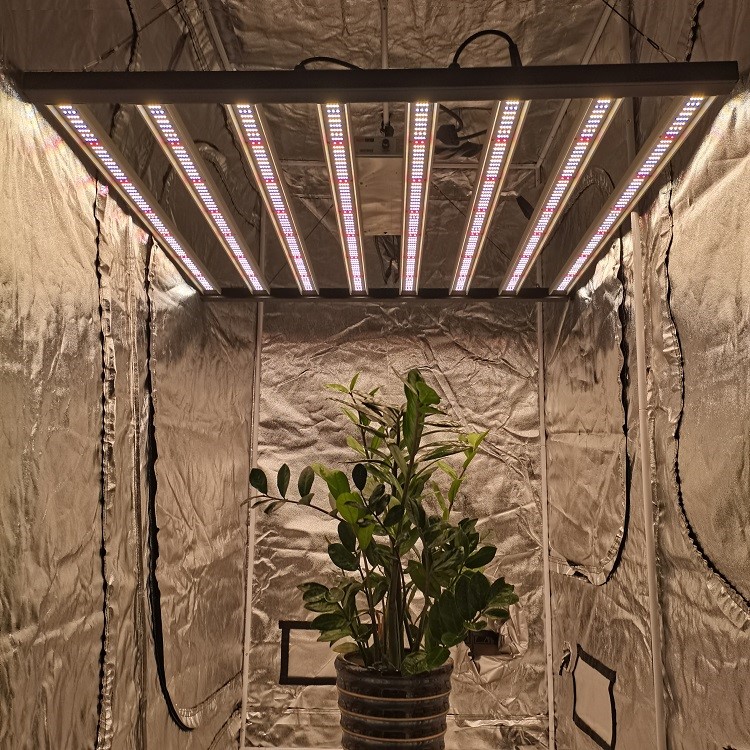
HLG LED Grow Light Supplement with 30 Watts of UVA Light from HLG.
If you are looking for a supplemental bar light that can improve the UV spectrum of your grow, the HLG 30-Watt UVA Supplement LED Grow Light is one that you should give some thought to purchasing. This Horticulture Lighting Group strip light is a great and affordable alternative to what you were looking for. You can either attach it to your existing HLG 550 or HLG 600 lights or hang it separately on the side of your grow tent to incorporate UVA LED 365nm + 385nm spectrum into your grow. Both of these options are available to you.

